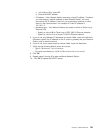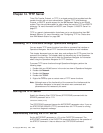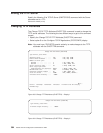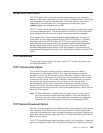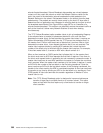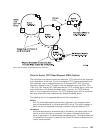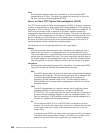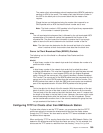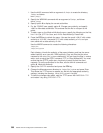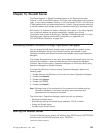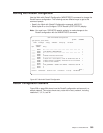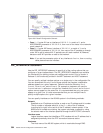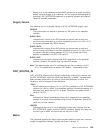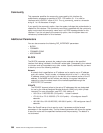The master client acknowledges subnet broadcast data (BDATA) packets by
sending an ACK to the server. The master client sets the block number in
this ACK to the block prior to the current block that the master client
requires.
Clients that are not indicated as being the master client respond to an
OACK packet with an ACK that has the block number set to zero.
Note: The block number in ACK packets is the 2-byte binary representation
of the number in network byte order.
tsize
The null-terminated
tsize
keyword that is followed by the null-terminated ASCII
representation of the decimal number that represents the file size of the
requested file. The client uses this information to ensure that it has enough
space to store the file and to determine the last block number of the file.
Note: The client can also determine the file size and last block of a transfer
when it receives a block that contains less data than the block size.
Server to Client Broadcast Data (BDATA) Packets
The following is a list of the fields in a Broadcast Data Packet and their
descriptions:
block#
2–byte binary number in the network byte order that indicates the number of a
particular block of data.
sbid
4–byte binary number in the network byte order that is called the
subnet
broadcast identification
. This must be compared with the
sbid
that was returned
in the OACK response to a read request (RRQ) with the Subnet Broadcast
option. Along with the source port, this uniquely identifies a Subnet Broadcast
File Transfer. The source port of the BDATA packet must be compared with the
source port of the initial OACK packet that was received for this transfer. Only
BDATA packets that match on both the SBID and source ports are considered
part of the requested transfer. All other BDATA packets must be ignored.
data
This is the data for this block of the file transfer. With the exception of the last
block of the file, the size of the data is equal to the block size for the transfer.
The last block of the file must be less than the block size, even if it means that
the length of the data in the last block is zero. However, the server might not be
done broadcasting blocks after the last block of the file is broadcast. Control
can be transferred to another client in the subnet broadcast file group that has
not yet received all the blocks in the file.
Configuring TFTP for Clients other than IBM Network Station
To allow other clients to use the TFTP server, you must ensure that the QTFTP
profile has authority to access the directories and files that the clients access
through the TFTP server. You also need to set the TFTP server attributes to allow
the desired client requests.
When configuring TFTP for use by clients other than the IBM Network Station, first
determine the directories and files that the clients are using. For this example, the
clients use the TFTP server to read files from the directory /netpc/bin/system.
Chapter 14. TFTP Server 389



